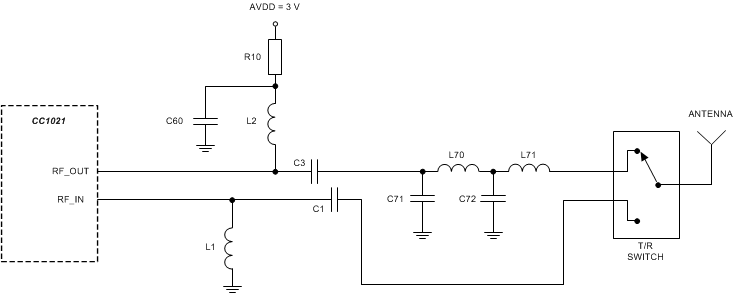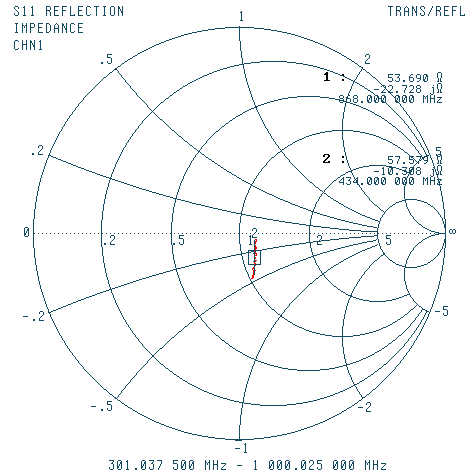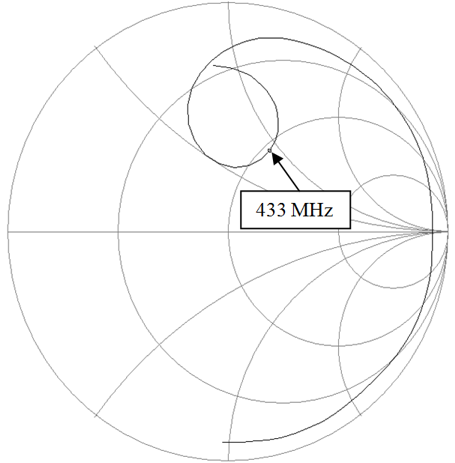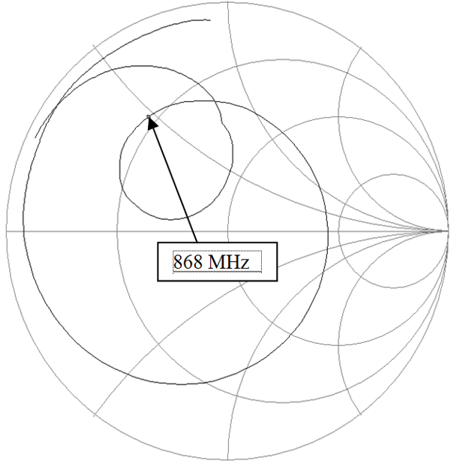ZHCSJU4I November 2006 – September 2018 CC1020
PRODUCTION DATA.
- 1器件概述
- 2修订历史记录
- 3Terminal Configuration and Functions
-
4Specifications
- 4.1 Absolute Maximum Ratings
- 4.2 ESD Ratings
- 4.3 Recommended Operating Conditions
- 4.4 RF Transmit
- 4.5 RF Receive
- 4.6 RSSI / Carrier Sense
- 4.7 Intermediate Frequency (IF)
- 4.8 Crystal Oscillator
- 4.9 Frequency Synthesizer
- 4.10 Digital Inputs and Outputs
- 4.11 Current Consumption
- 4.12 Thermal Resistance Characteristics for VQFNP Package
-
5Detailed Description
- 5.1 Overview
- 5.2 Functional Block Diagram
- 5.3 Configuration Overview
- 5.4 Microcontroller Interface
- 5.5 4-wire Serial Configuration Interface
- 5.6 Signal Interface
- 5.7 Data Rate Programming
- 5.8 Frequency Programming
- 5.9
Receiver
- 5.9.1 IF Frequency
- 5.9.2 Receiver Channel Filter Bandwidth
- 5.9.3 Demodulator, Bit Synchronizer, and Data Decision
- 5.9.4 Receiver Sensitivity Versus Data Rate and Frequency Separation
- 5.9.5 RSSI
- 5.9.6 Image Rejection Calibration
- 5.9.7 Blocking and Selectivity
- 5.9.8 Linear IF Chain and AGC Settings
- 5.9.9 AGC Settling
- 5.9.10 Preamble Length and Sync Word
- 5.9.11 Carrier Sense
- 5.9.12 Automatic Power-up Sequencing
- 5.9.13 Automatic Frequency Control
- 5.9.14 Digital FM
- 5.10 Transmitter
- 5.11 Input and Output Matching and Filtering
- 5.12 Frequency Synthesizer
- 5.13 VCO and LNA Current Control
- 5.14 Power Management
- 5.15 On-Off Keying (OOK)
- 5.16 Crystal Oscillator
- 5.17 Built-in Test Pattern Generator
- 5.18 Interrupt on Pin DCLK
- 5.19 PA_EN and LNA_EN Digital Output Pins
- 5.20 System Considerations and Guidelines
- 5.21 Antenna Considerations
- 5.22 Configuration Registers
- 6Applications, Implementation, and Layout
- 7器件和文档支持
- 8机械、封装和可订购信息
5.11 Input and Output Matching and Filtering
When designing the impedance matching network for the CC1020 device, the circuit must be matched correctly at the harmonic frequencies as well as at the fundamental tone. A recommended matching network is shown in Figure 5-22. Component values for various frequencies are given in Table 5-8. Component values for other frequencies can be found using the SmartRF Studio software.
As can be seen from Figure 5-22 and Table 5-8, the 433 MHz network utilizes a T-type filter, while the 868/915 MHz network has a π-type filter topology.
It is important to remember that the physical layout and the components used contribute significantly to the reflection coefficient, especially at the higher harmonics. For this reason, the frequency response of the matching network should be measured and compared to the response of the TI reference design. Refer to Figure 5-24 and Table 5-9 as well as Figure 5-25 and Table 5-10.
The use of an external T/R switch reduces current consumption in TX for high output power levels and improves the sensitivity in RX. A recommended application circuit is available from the TI web site (CC1020EMX). The external T/R switch can be omitted in certain applications, but performance will then be degraded.
The match can also be tuned by a shunt capacitor array at the PA output (RF_OUT). The capacitance can be set in 0.4-pF steps and used either in RX mode or TX mode. The RX_MATCH[3:0] and TX_MATCH[3:0] bits in the MATCH register control the capacitor array.
 Figure 5-22 Input and Output Matching Network
Figure 5-22 Input and Output Matching Network Table 5-8 Component Values for the Matching Network Described in Figure 5-22
| ITEM | 433 MHz | 868 MHz | 915 MHz |
|---|---|---|---|
| C1 | 10 pF, 5%, NP0, 0402 | 47 pF, 5%, NP0, 0402 | 47 pF, 5%, NP0, 0402 |
| C3 | 5.6 pF, 5%, NP0, 0402 | 10 pF, 5%, NP0, 0402 | 10 pF, 5%, NP0, 0402 |
| C60 | 220 pF, 5%, NP0, 0402 | 220 pF, 5%, NP0, 0402 | 220 pF, 5%, NP0, 0402 |
| C71 | DNM(1) | 8.2 pF 5%, NP0, 0402 | 8.2 pF 5%, NP0, 0402 |
| C72 | 4.7 pF, 5%, NP0, 0402 | 8.2 pF 5%, NP0, 0402 | 8.2 pF 5%, NP0, 0402 |
| L1 | 33 nH, 5%, 0402 | 82 nH, 5%, 0402 | 82 nH, 5%, 0402 |
| L2 | 22 nH, 5%, 0402 | 3.6 nH, 5%, 0402 | 3.6 nH, 5%, 0402 |
| L70 | 47 nH, 5%, 0402 | 5.1 nH, 5%, 0402 | 5.1 nH, 5%, 0402 |
| L71 | 39 nH, 5%, 0402 | 0 Ω resistor, 0402 | 0 Ω resistor, 0402 |
| R10 | 82 Ω, 5%, 0402 | 82 Ω, 5%, 0402 | 82 Ω, 5%, 0402 |


Table 5-9 Impedances at the First 5 Harmonics
(433 MHz Matching Network)
| FREQUENCY
(MHz) |
REAL
(Ohms) |
IMAGINARY
(Ohms) |
|---|---|---|
| 433 | 54 | 44 |
| 866 | 20 | 173 |
| 1299 | 288 | –563 |
| 1732 | 14 | –123 |
| 2165 | 5 | –66 |

Table 5-10 Impedances at the First Three Harmonics
(868/915 MHz Matching Network)
| FREQUENCY
(MHz) |
REAL
(Ohms) |
IMAGINARY
(Ohms) |
|---|---|---|
| 868 | 15 | 24 |
| 915 | 20 | 35 |
| 1736 | 1.5 | 18 |
| 1830 | 1.7 | 22 |
| 2604 | 3.2 | 44 |
| 2745 | 3.6 | 45 |